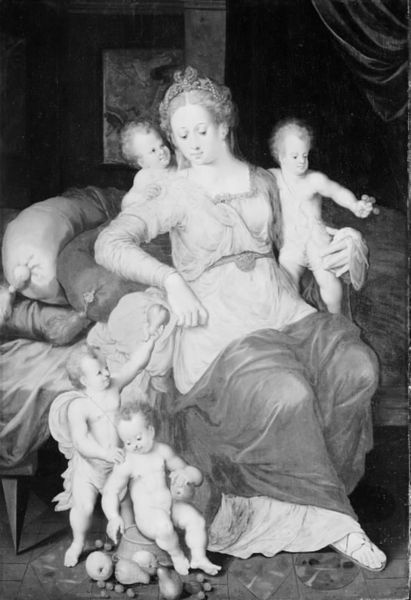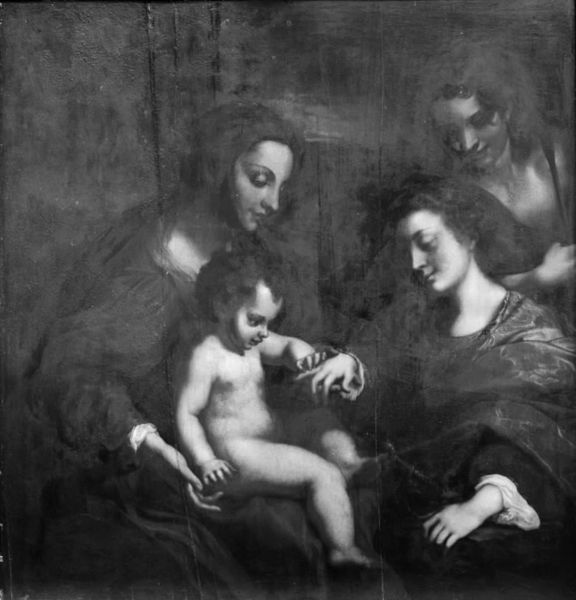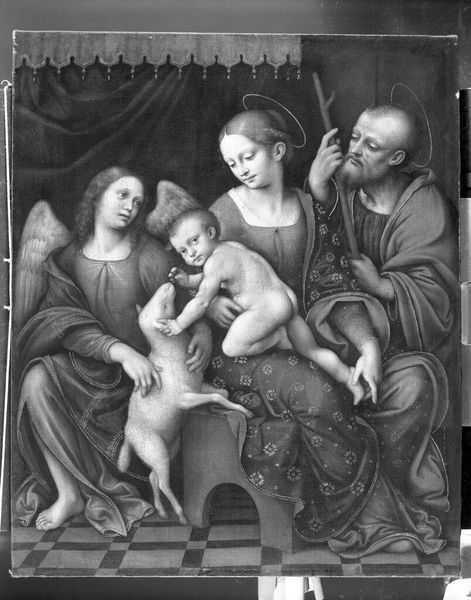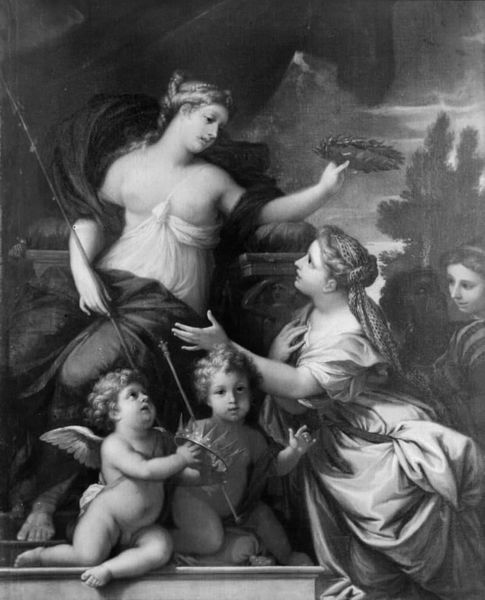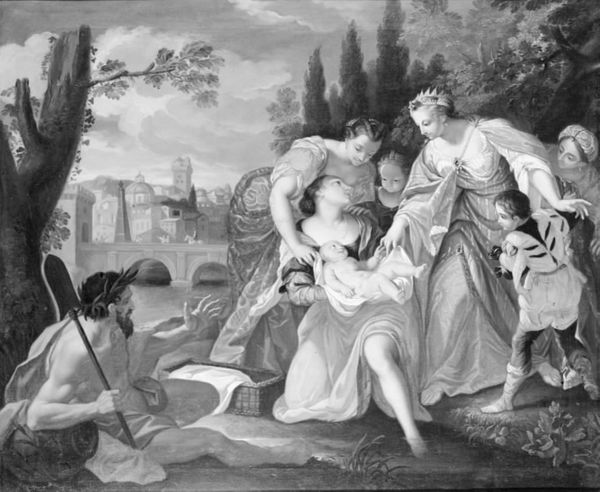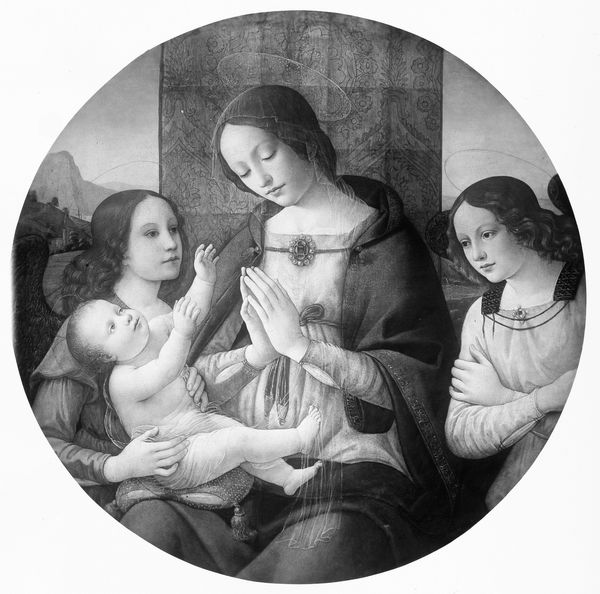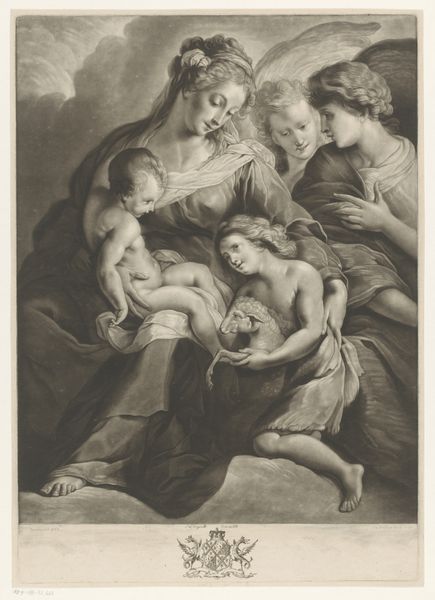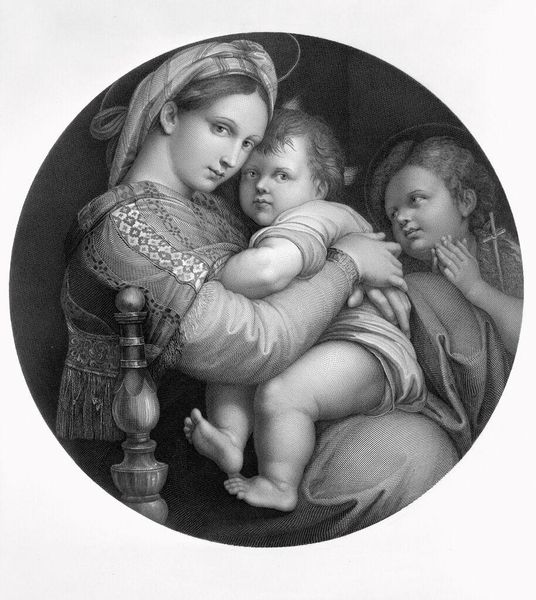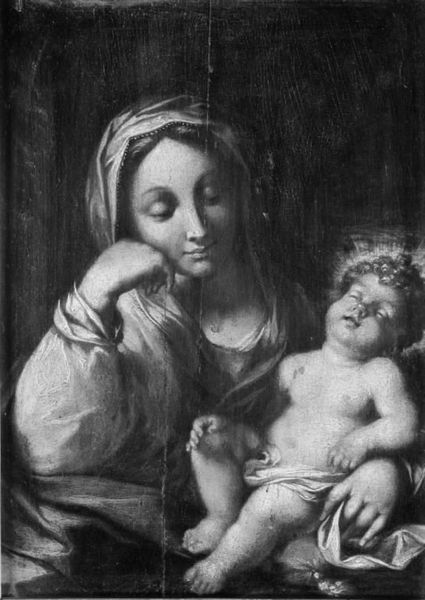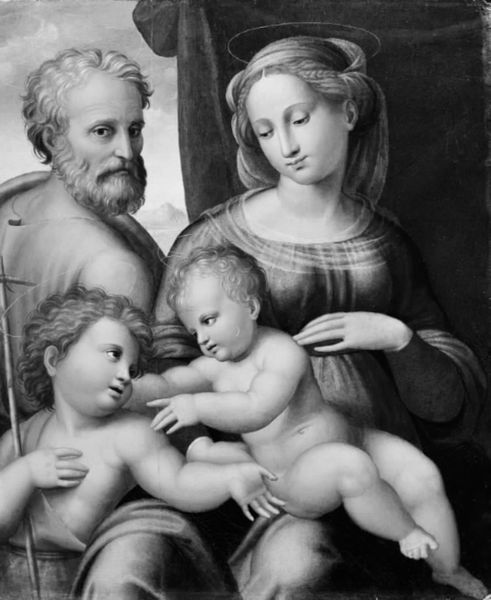
painting, oil-paint
#
portrait
#
high-renaissance
#
painting
#
oil-paint
#
figuration
#
black and white
#
history-painting
#
italian-renaissance
Dimensions: 75 cm (height) x 58 cm (width) (Netto)
Curator: Looking at this High Renaissance painting entitled "The Holy Family," completed around 1530, now housed here at the SMK, what’s your initial take on it? Editor: The somber, almost melancholic, tone strikes me first. Despite the idealized beauty, there’s a restraint here, a muted quality that feels heavier than typical portrayals of this subject. Is this painted with oil? Curator: Indeed, this figuration is realized in oil. Consider how paintings such as this function in society during that time. How did institutional settings like churches dictate or inform the approach taken by artists and perhaps limit the means of expression for the communities that view art. Editor: Exactly, that subdued palette then can also speak volumes about its intersection with the prevailing theological interpretations that inform familial and societal roles. I wonder about the intended audience and the artist’s own socio-political positioning. The almost porcelain-like skin tones – how might we decode these beyond mere aesthetics? Curator: Well, of course, you’re touching on the history of the portrait style itself. Consider who got to commission this, their wealth and access. So much of Italian Renaissance art and its reception centers around the male gaze and, more broadly, access to the upper echelons of European society at the time of this work's creation. It’s a visual declaration of power and religious legitimacy, shaped by both the Church and societal elites. Editor: Precisely. Looking at the composition now through this lens, the virgin presents not simply maternal love, but also dutiful servitude, constrained, a concept explored heavily across feminist theory and further re-enforced across the sociological constructs. How did they even understand that role in this era? Curator: By taking your critical position, this invites us to interrogate those norms and power structures that underpinned its creation, reminding us to consider the broader implications for women’s roles across both that time and extending the interrogation to the present. Editor: Absolutely. This is so incredibly moving. Thanks to that additional context and historical perspective, I see this familiar scene, this image of the "The Holy Family," anew with greater understanding and an additional layer of interpretation.
Comments
No comments
Be the first to comment and join the conversation on the ultimate creative platform.

